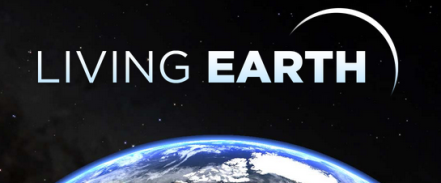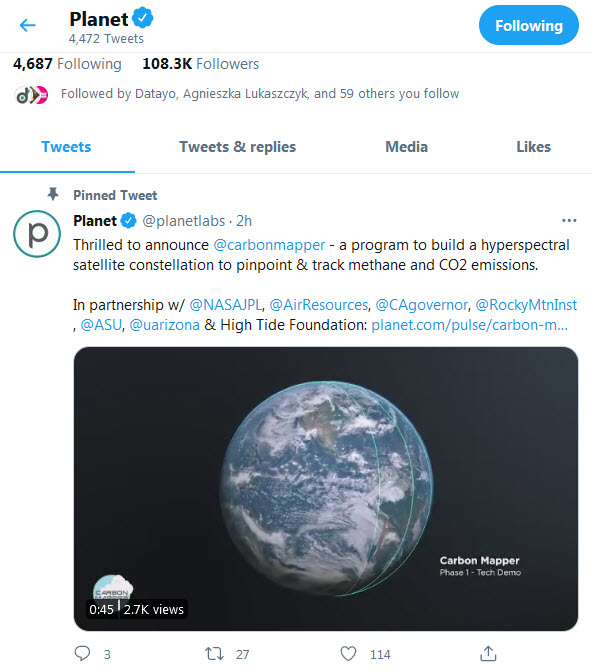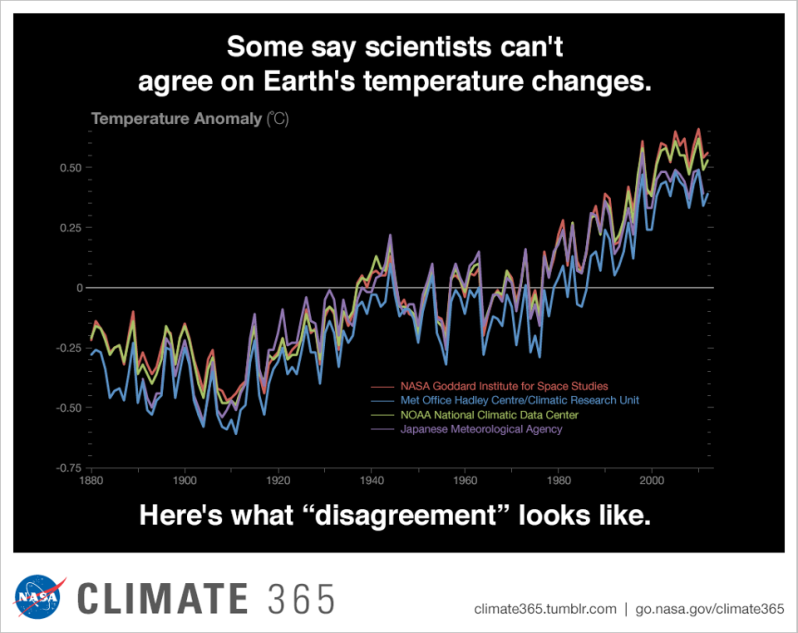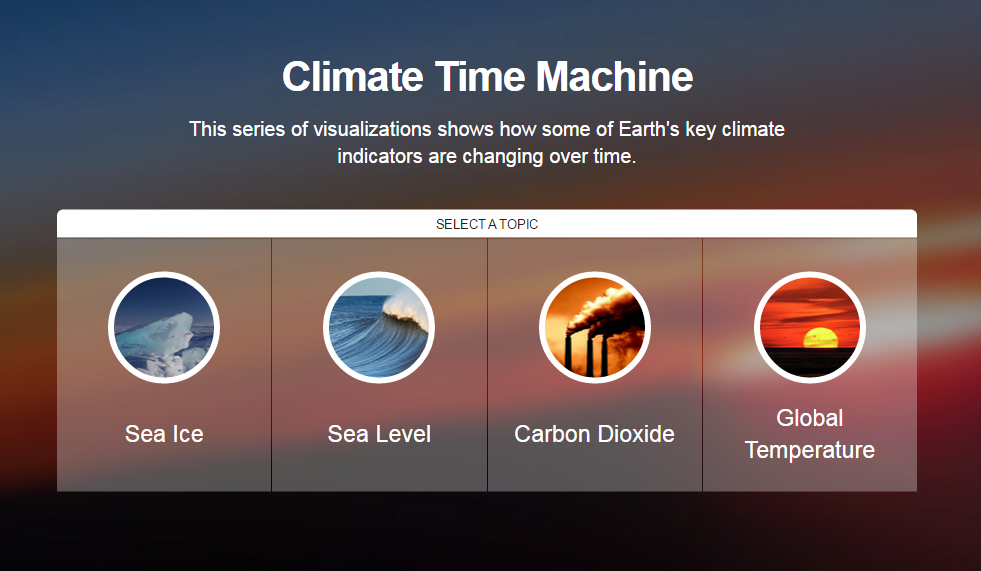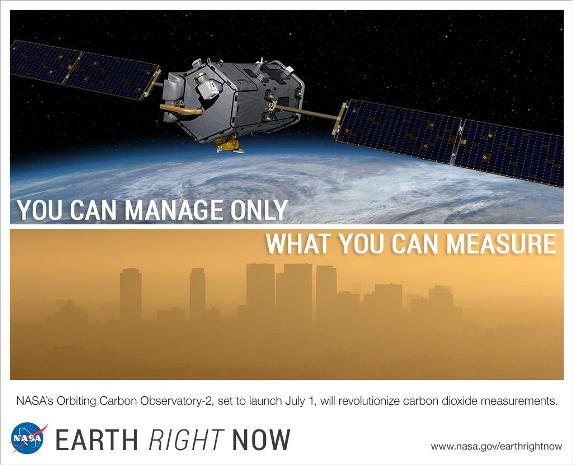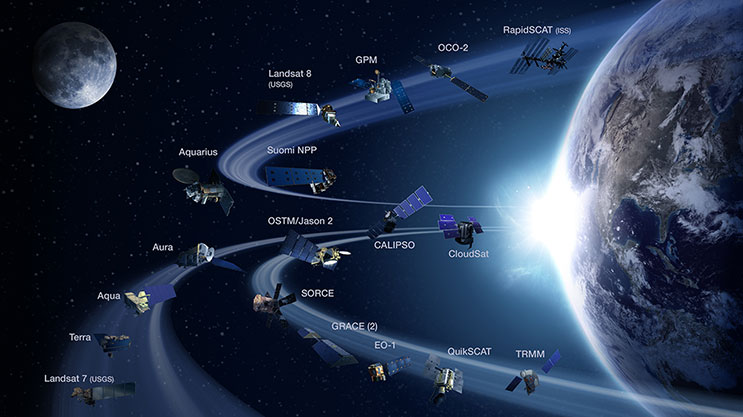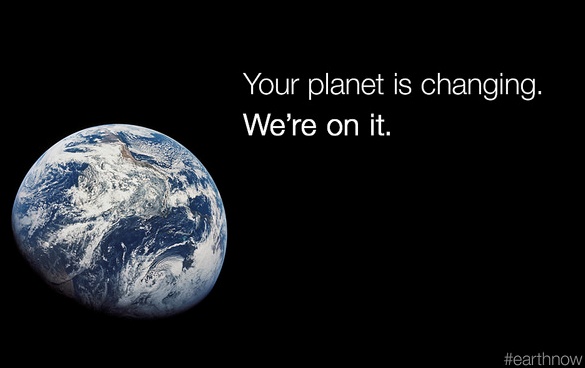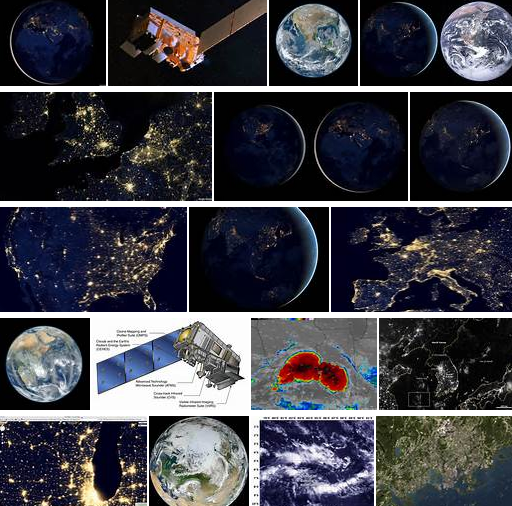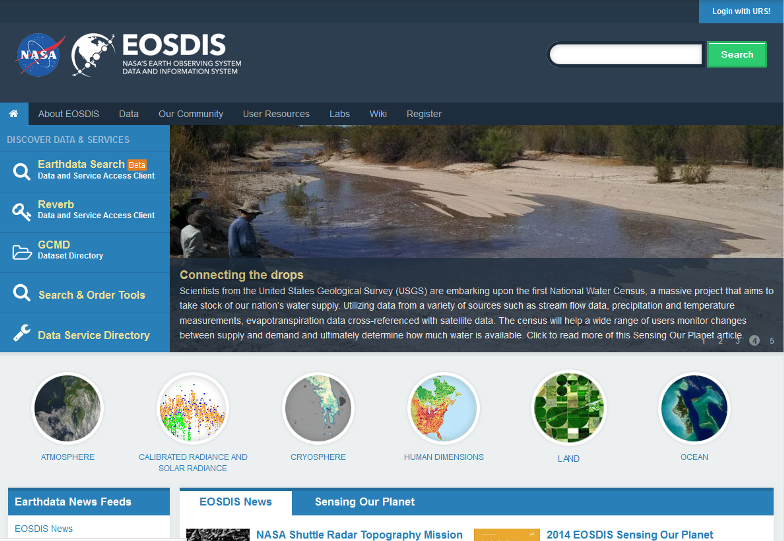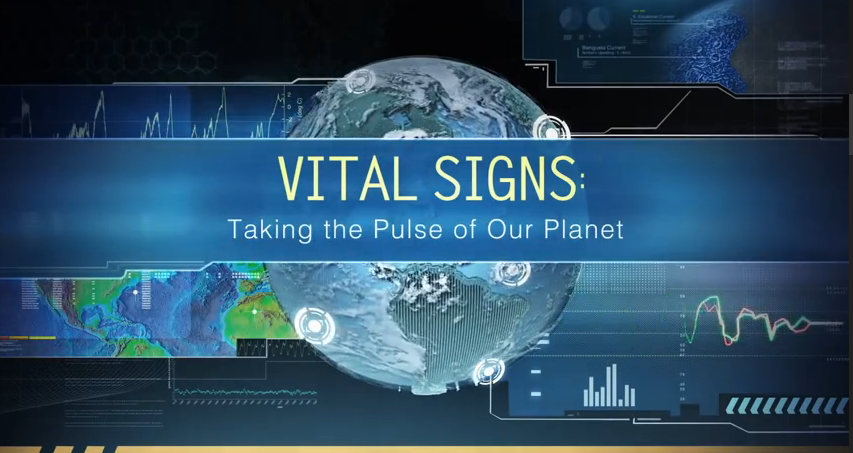Earth Right Now: Difference between revisions
Siterunner (talk | contribs) No edit summary |
Siterunner (talk | contribs) No edit summary |
||
| (25 intermediate revisions by the same user not shown) | |||
| Line 1: | Line 1: | ||
[[File:Living Earth.png]] | |||
<big><big><big>2021</big></big></big> | |||
[[File:Planet 4-15-2021 10-22-51 AM.jpg]] | |||
<big><big><big><big>[[Earth Science Vital Signs]]</big></big></big></big> | |||
[http://www.nasa.gov/earthrightnow/ <small>'''Earth Right Now'''</small>] | |||
| |||
<big><big><big>2020</big></big></big> | |||
<big> '''''Earth Observation System / EOS'''''</big> | |||
: ''https://eospso.nasa.gov/content/nasas-earth-observing-system-project-science-office'' | |||
<big>'''''Earth Right Now (Daily via NASA)'''''</big> | <big>'''''Earth Right Now (Daily via NASA)'''''</big> | ||
• ''(TW) https://twitter.com/NASAClimate'' | |||
• ''(TW) https://twitter.com/NASA'' | |||
• ''(TW) https://twitter.com/NASAJPL'' | |||
| Line 25: | Line 41: | ||
<big><big>'''''2018'''''</big></big> | <big><big>'''''2019-2018'''''</big></big> | ||
[http://climate.nasa.gov/resources/graphics-and-multimedia/ '''''Global Climate Change Resources from NASA'''''] | [http://climate.nasa.gov/resources/graphics-and-multimedia/ '''''Global Climate Change Resources from NASA'''''] | ||
* ''https://www.nasa.gov/topics/earth/index.html'' | * ''https://www.nasa.gov/topics/earth/index.html'' | ||
[[File:Climate365 NASA and science orgs measure and monitor.png]] | |||
| Line 35: | Line 55: | ||
[https://youtu.be/rgcE2lMa0Kw '''''2017 Takes Second Place for Hottest Year'''''] | [https://youtu.be/rgcE2lMa0Kw '''''2017 Takes Second Place for Hottest Year'''''] | ||
| Line 68: | Line 89: | ||
<big>'''''The DSCOVR Mission'''''</big> | <big>'''''The DSCOVR Mission'''''</big> | ||
<big>'''''Images of Earth from DSCOVR-EPIC in Lagrange orbit, daily 'selfies' from a million miles away'''''</big> | <big>'''''Images of Earth from DSCOVR-EPIC in Lagrange orbit, daily 'selfies' from a million miles away'''''</big> | ||
| Line 132: | Line 148: | ||
''As we review the latest from the US space agency's new focus, take a look at '''Pulse of the Planet, Vital Signs''' released Sept 2014...'' | ''As we review the latest from the US space agency's new focus, take a look at '''Pulse of the Planet, Vital Signs''' released Sept 2014...'' | ||
'''''To fully appreciate | |||
'''''To fully appreciate pulse's high resolution detail, click on the gear symbol, set it to 720p resolution and choose full screen video''''' | |||
| Line 143: | Line 160: | ||
; <big><big> ''Vital Signs'' </big></big> | ; <big><big> ''Vital Signs'' </big></big> | ||
[http://www.greenpolicy360.net/w/Earth_Science_Vital_Signs '''''Earth Science, Vital Signs'''''] | [http://www.greenpolicy360.net/w/Earth_Science_Vital_Signs '''''Earth Science, Vital Signs'''''] | ||
| Line 157: | Line 175: | ||
[[Image:Mission to Planet Earth .jpg | link=http://www.hq.nasa.gov/office/nsp/mtpe.htm]] | [[Image:Mission to Planet Earth .jpg | link=http://www.hq.nasa.gov/office/nsp/mtpe.htm]] | ||
''NASA's [http://science.nasa.gov/earth-science/ '''Earth Science Division''''] plans and manages earth science programs including '''Earth Right Now'''.'' | ''NASA's [http://science.nasa.gov/earth-science/ '''Earth Science Division''''] plans and manages earth science programs including '''Earth Right Now'''.'' | ||
''"The Earth Science Enterprise is dedicated to "understanding the total Earth system and the effects of natural and human-induced changes on the global environment."'' | ''"The Earth Science Enterprise (ESE)is dedicated to "understanding the total Earth system and the effects of natural and human-induced changes on the global environment."'' | ||
''NASA’s Earth Observing System (EOS) provides "long-term global observations of land surfaces, biosphere, solid Earth, atmosphere, and oceans."'' | |||
[http://eos.gsfc.nasa.gov/ '''''The Earth Science Projects Division] manages the missions which advance our understanding of the Earth.''''' | [http://eos.gsfc.nasa.gov/ '''''The Earth Science Projects Division] manages the missions which advance our understanding of the Earth.''''' | ||
| Line 191: | Line 210: | ||
[http://www.nasa.gov/mission_pages/NPP/main/#.VDFkmxZab8k '''''Suomi NPP - Next-generation Earth-observing satellite system'''''] | [http://www.nasa.gov/mission_pages/NPP/main/#.VDFkmxZab8k '''''Suomi NPP - Next-generation Earth-observing satellite system'''''] | ||
[http://www.jpss.noaa.gov/program.html '''''Next generation NASA-NOAA #EarthMonitoring satellite | [http://www.jpss.noaa.gov/program.html '''''Next generation NASA-NOAA #EarthMonitoring satellite'''''] | ||
○ | ○ | ||
''http://eros.usgs.gov/ceos/lsip.shtml'' | ''http://eros.usgs.gov/ceos/lsip.shtml'' | ||
| Line 209: | Line 230: | ||
'''''"The ultimate beneficiaries are the present and future generations of the people on Earth..."''''' | |||
'''''"The goal of the Earth Observing project is improved understanding of the Earth as an integrated system."''''' | |||
'''''"[https://en.m.wikipedia.org/wiki/NASA_Earth_Science Earth Science]: "To improve life here'''" '''and''' "'''to understand and protect our home planet."''''' | |||
[http://www.greenpolicy360.net/w/File:Earth_satellites_in_3D.jpg '''''Eyes on the Earth - Earth Right Now'''''] | |||
[http:// | [https://earthdata.nasa.gov ''Earth Data''], [http://earthobservatory.nasa.gov/Features ''Earth Observatory''] | ||
[http://earthobservatory.nasa.gov/Images/?eocn=topnav&eoci=images ''Images''] | |||
[http://www.nasa.gov/mission_pages/Grace/ ''Grace''] | |||
[http://grace.jpl.nasa.gov/ ''Grace-JPL''] | |||
[http://www.csr.utexas.edu/grace/ ''Grace-UTexas''] | |||
○ | ○ | ||
[http://dahrjamail.net/former-nasa-chief-scientist-were-effectively-taking-a-sledgehammer-to-the-climate-system '''''NASA Chief Scientist'''''] | [http://dahrjamail.net/former-nasa-chief-scientist-were-effectively-taking-a-sledgehammer-to-the-climate-system '''''NASA Chief Scientist'''''] | ||
| Line 227: | Line 257: | ||
[http://www.nasa.gov/content/earth-missions-list/ '''''Earth Missions List'''''] | [http://www.nasa.gov/content/earth-missions-list/ '''''Earth Missions List'''''] | ||
[http://visibleearth.nasa.gov '''''Visible Earth'''''], [http://earthobservatory.nasa.gov/GlobalMaps/?eocn=topnav&eoci=globalmaps ''Global Maps'' | [http://visibleearth.nasa.gov '''''Visible Earth'''''], [http://earthobservatory.nasa.gov/GlobalMaps/?eocn=topnav&eoci=globalmaps ''Global Maps''] | ||
[http://visibleearth.nasa.gov/view_cat.php?categoryID=1484 ''Visible Earth_2''], [http://visibleearth.nasa.gov/view.php?id=79765 ''Visible Earth_3''] | |||
[http:// | [http://eoimages2.gsfc.nasa.gov/images/imagerecords/79000/79765/dnb_land_ocean_ice.2012.3600x1800.jpg ''Visible Earth_4''] | ||
| Line 245: | Line 271: | ||
[https://www.flickr.com/photos/gsfc/sets/72157627439487497/show/ '''''NPP Images Gallery'''''] | [https://www.flickr.com/photos/gsfc/sets/72157627439487497/show/ '''''NPP Images Gallery'''''] | ||
[[File:EarthNow our planet is changing.jpg]] | [[File:EarthNow our planet is changing.jpg]] | ||
| Line 254: | Line 281: | ||
'''''We need to develop Earth Science as a comprehensive factual set of measurements if we are to | '''''We need to develop Earth Science as a comprehensive factual set of measurements if we are to secure and manage the future of the [https://www.greenpolicy360.net/w/Category:Earth_System_Science Earth Systems] | ||
'''''In the 1980s, the U.S. House Science, Space and Technology Committee led a new Earth vision and NASA embraced the concept of Earth system science with a global perspective of [https://www.greenpolicy360.net/w/Earth_Science_Research_from_Space Earth monitoring] | '''''In the 1980s, the U.S. House Science, Space and Technology Committee led a new Earth vision and NASA embraced the concept of Earth system science with a global perspective of [https://www.greenpolicy360.net/w/Earth_Science_Research_from_Space Earth monitoring] | ||
'''''The continuing mission of NASA, its partners and Earth Science research | '''''The continuing mission of NASA, its partners and Earth Science research remains vital to [https://www.greenpolicy360.net/w/New_Definitions_of_National_Security] new understandings of national and global security | ||
new understandings of national and global security | |||
'''''We are in a race against time | '''''We are in a race against time | ||
'''''We need the best possible scientific knowledge to [http:www.thinbluelayer.com protect and preserve] | '''''We need the best possible scientific knowledge to [http://www.thinbluelayer.com protect and preserve] [https://www.greenpolicy360.net/w/The_Commons "The Commons"] | ||
'''''as 'wise stewards' securing communities, nations and global eco-systems''''' | |||
'''''as 'wise stewards' ''''' | |||
| Line 292: | Line 315: | ||
'''''Terra - Thermal Emission Reflection Radiometer ...''''' | '''''Terra - Thermal Emission Reflection Radiometer ...''''' | ||
'''''#EarthScience''''' '''''#PlanetCitizens''''' '''''#PlanetCitizens, PlanetScientists''''' '''''#EarthPOV''''' | |||
[[File:Vital Signs, Taking the Pulse of the Planet Sept2014.png | link=https://www.youtube.com/watch?v=mrnBdcdM4UM&list=UUAY-SMFNfynqz1bdoaV8BeQ]] | |||
| Line 317: | Line 336: | ||
[[Category:Earth Science]] | [[Category:Earth Science]] | ||
[[Category:Earth Science from Space]] | [[Category:Earth Science from Space]] | ||
[[Category:Earth System Science]] | |||
[[Category:Eco-nomics]] | [[Category:Eco-nomics]] | ||
[[Category:Environmental Security]] | [[Category:Environmental Security]] | ||
Revision as of 14:41, 15 April 2021
2021
2020
Earth Observation System / EOS
Earth Right Now (Daily via NASA)
• (TW) https://twitter.com/NASAClimate
• (TW) https://twitter.com/NASA
• (TW) https://twitter.com/NASAJPL
Earth Research from Space @ GreenPolicy online
2019-2018
Global Climate Change Resources from NASA
2017
2017 Takes Second Place for Hottest Year
2016
Science in the Cause of National & Global Security
NASA Announcement: Unlimited access to the 16-plus-year database for the Ministry of Economy, Trade and Industry (Japan) Advanced Spaceborne Thermal Emission and Reflection Radiometer (ASTER) instrument, which flies aboard NASA's Terra satellite. ASTER’s database, more than 2.95 million individual scenes is worldwide....
"We anticipate a dramatic increase in the number of users of our data, with new and exciting results to come," said Michael Abrams, ASTER science team leader at NASA Jet Propulsion Laboratory in Pasadena, California, home to ASTER's U.S. science team.
- 2015
From Above We See Our Planet: High Definition Video from NASA
JPL-NASA #EarthScience from space / Five new #EarthNow missions
······································
The DSCOVR Mission
Images of Earth from DSCOVR-EPIC in Lagrange orbit, daily 'selfies' from a million miles away
·········································································
- DSCOVR is launched and on its way!
Feb 12, 2015 The DSCOVR satellite with its EPIC cam, PlasMag & NISTAR instrument package is on the way... a million mile journey, in approx four months, it will light up, be tested and begin delivering data to Earth, including near-real-time imaging of Earth provided online.
GreenPolicy360 is assisting NASA DSCOVR mission managers and we will be delivering a stream of amazing imagery of our planet as NASA/NOAA begin uploading EPICs pictures of ... Planet Earth 'selfies'!
············································································
Feb 8, 2015 DSCOVR, EPIC and PlasMag ready to launch
NOAA’s Deep Space Climate Observatory spacecraft, DSCOVR carries three advanced instruments -- an 'Earthcam' capability instrument called EPIC, which can see visible light and "wavelengths that can tell scientists about aerosols, which cool the atmosphere, and about ozone, clouds, vegetation, and ultraviolet light... EPIC will capture 'whole earth' images, the first that will be made available since Apollo's mission in 1972.
"Another sensor, PlasMag, will keep an eye on solar weather and give the Earth updates whenever a storm on the Sun threatened to fry broad swaths of the electrical grid. That's a high-risk, low-probability event that has never happened at the feared scale. Fortunately. Yet.
"The third instrument, NISTAR, will help calculate the Earth’s energy “budget,” the measurement perhaps most critical to understanding global warming: Is more heat coming in than is going out?" [Bloomberg]
- History-making Earth Science
Earth Science Research from Space / #EarthScience
OCO-2 Historic Mission to Study the Earth's Atmosphere
NASA Challenges Public to Join In
Monitoring the Home Planet
As the realization of the critical importance of studying life systems of the planet has grown, the priorities of NASA have shifted.
The incoming US Congress will have to address the evident risks and dangers to the planet, even though its leadership denies risks and dangers.
As we review the latest from the US space agency's new focus, take a look at Pulse of the Planet, Vital Signs released Sept 2014...
To fully appreciate pulse's high resolution detail, click on the gear symbol, set it to 720p resolution and choose full screen video
"Pulse of the Planet" / HD Video
bit.ly/VitalSignsPulseofthePlanet
- Earth Right Now
- Vital Signs
NASA Climate: Vital Signs of the Planet
○
Where did Earth Right Now start as a mission?
NASA's Earth Science Enterprise (ESE) -- Originally called "Mission to Planet Earth (MTPE)"
NASA's Earth Science Division' plans and manages earth science programs including Earth Right Now.
"The Earth Science Enterprise (ESE)is dedicated to "understanding the total Earth system and the effects of natural and human-induced changes on the global environment."
NASA’s Earth Observing System (EOS) provides "long-term global observations of land surfaces, biosphere, solid Earth, atmosphere, and oceans."
The Earth Science Projects Division manages the missions which advance our understanding of the Earth.
NASA's Earth Observing System Project Office
- NASA Earth Science: Critical Science, Vital Signs
Current Generation Earth Research from Space, Missions and Programs
Responding to the Challenge of Climate and Environmental Change
Earth Observing System Data and Information System - Maps
Suomi NPP - Next-generation Earth-observing satellite system
Next generation NASA-NOAA #EarthMonitoring satellite
○
http://eros.usgs.gov/ceos/lsip.shtml
http://eros.usgs.gov/ceos/satellites_midres1.shtml
http://eros.usgs.gov/ceos/satellites_midres2.shtml
http://eros.usgs.gov/ceos/satellites_midres3.shtml
http://eros.usgs.gov/ceos/overview.shtml
http://eros.usgs.gov/ceos/sensors_midres8.shtml
"The ultimate beneficiaries are the present and future generations of the people on Earth..."
"The goal of the Earth Observing project is improved understanding of the Earth as an integrated system."
"Earth Science: "To improve life here" and "to understand and protect our home planet."
Eyes on the Earth - Earth Right Now
○
Visible Earth_2, Visible Earth_3
○ ○ ○ ○
- Planet Citizens, Y/Our Planet Is Changing
We need to develop Earth Science as a comprehensive factual set of measurements if we are to secure and manage the future of the Earth Systems
In the 1980s, the U.S. House Science, Space and Technology Committee led a new Earth vision and NASA embraced the concept of Earth system science with a global perspective of Earth monitoring
The continuing mission of NASA, its partners and Earth Science research remains vital to [1] new understandings of national and global security
We are in a race against time
We need the best possible scientific knowledge to protect and preserve "The Commons"
as 'wise stewards' securing communities, nations and global eco-systems
○ ○ ○ ○
"We shall never cease from exploration
and the end of all our exploring will be to arrive where we started and know the place for the first time."
– T.S. Eliot
Terra - Thermal Emission Reflection Radiometer ...
#EarthScience #PlanetCitizens #PlanetCitizens, PlanetScientists #EarthPOV
- Antarctica
- Anthropocene
- Arctic
- Atmospheric Science
- Climate Change
- Climate Policy
- Digital Citizen
- Earth Imaging
- Earth Observations
- Earth Science
- Earth Science from Space
- Earth System Science
- Eco-nomics
- Environmental Security
- Environmental Security, National Security
- EOS eco Operating System
- ESA
- Global Security
- Global Warming
- ISS
- NASA
- NOAA
- Natural Capital
- New Definitions of National Security
- New Space
- Oceans
- Ocean Ecosystem
- Ocean Science
- Ocean Sustainability
- Planet Citizen
- Planet Citizens
- Planet Citizens, Planet Scientists
- Planet Scientist
- Planet API
- Strategic Demands
- Biogeosciences
- Cryosphere
- Geophysics and Geochemistry
- Mineralogy
- Geology
- Geophysics
- Hydrology
- Natural Resources
- Planetary Science
- Space Science and Space Physics
